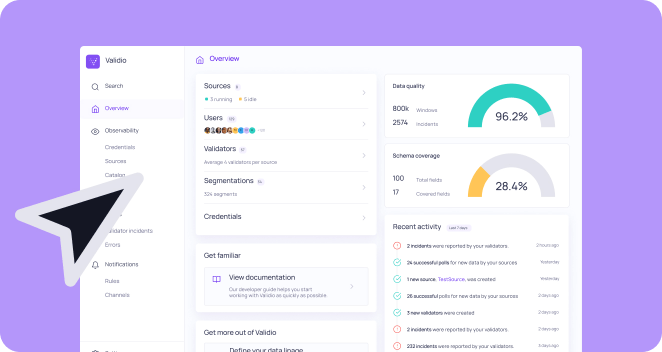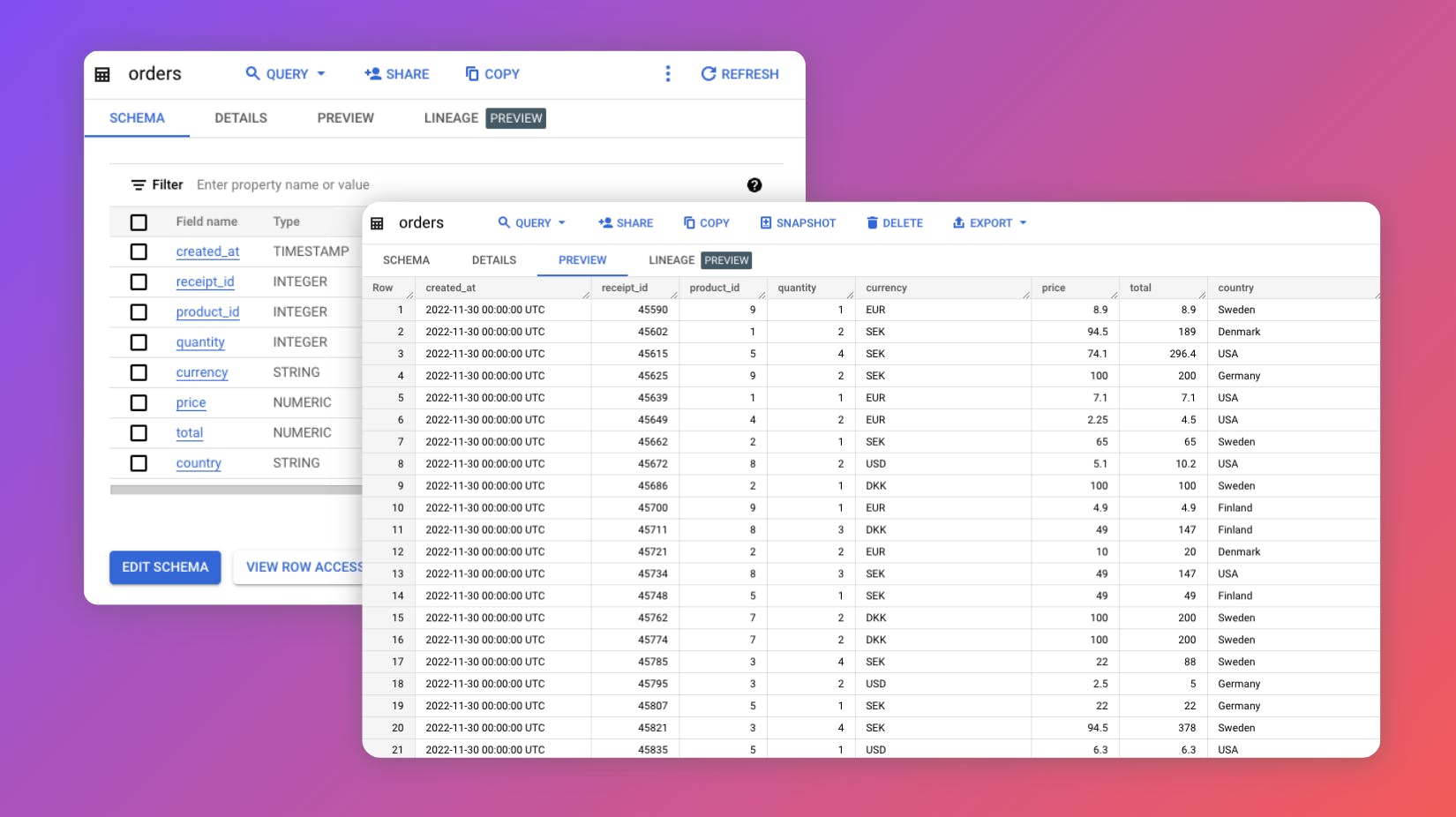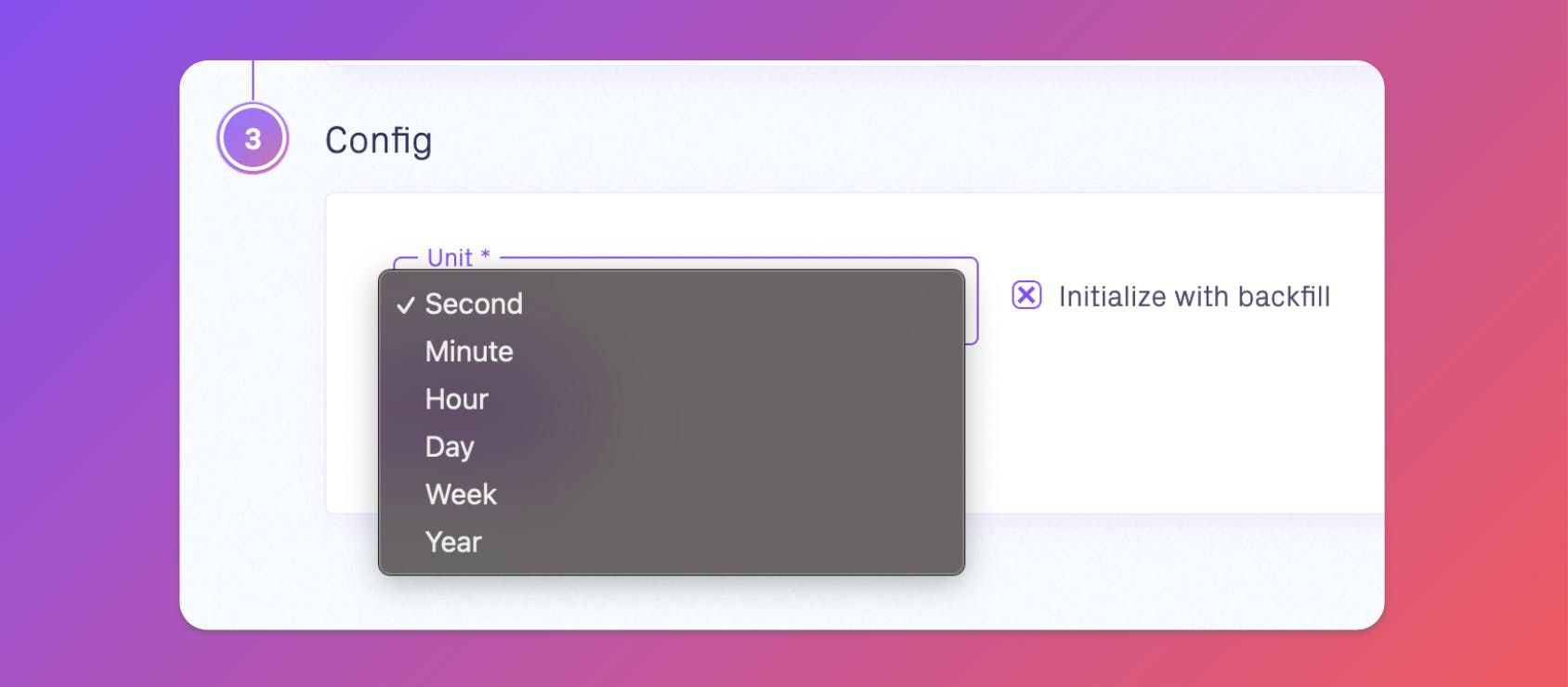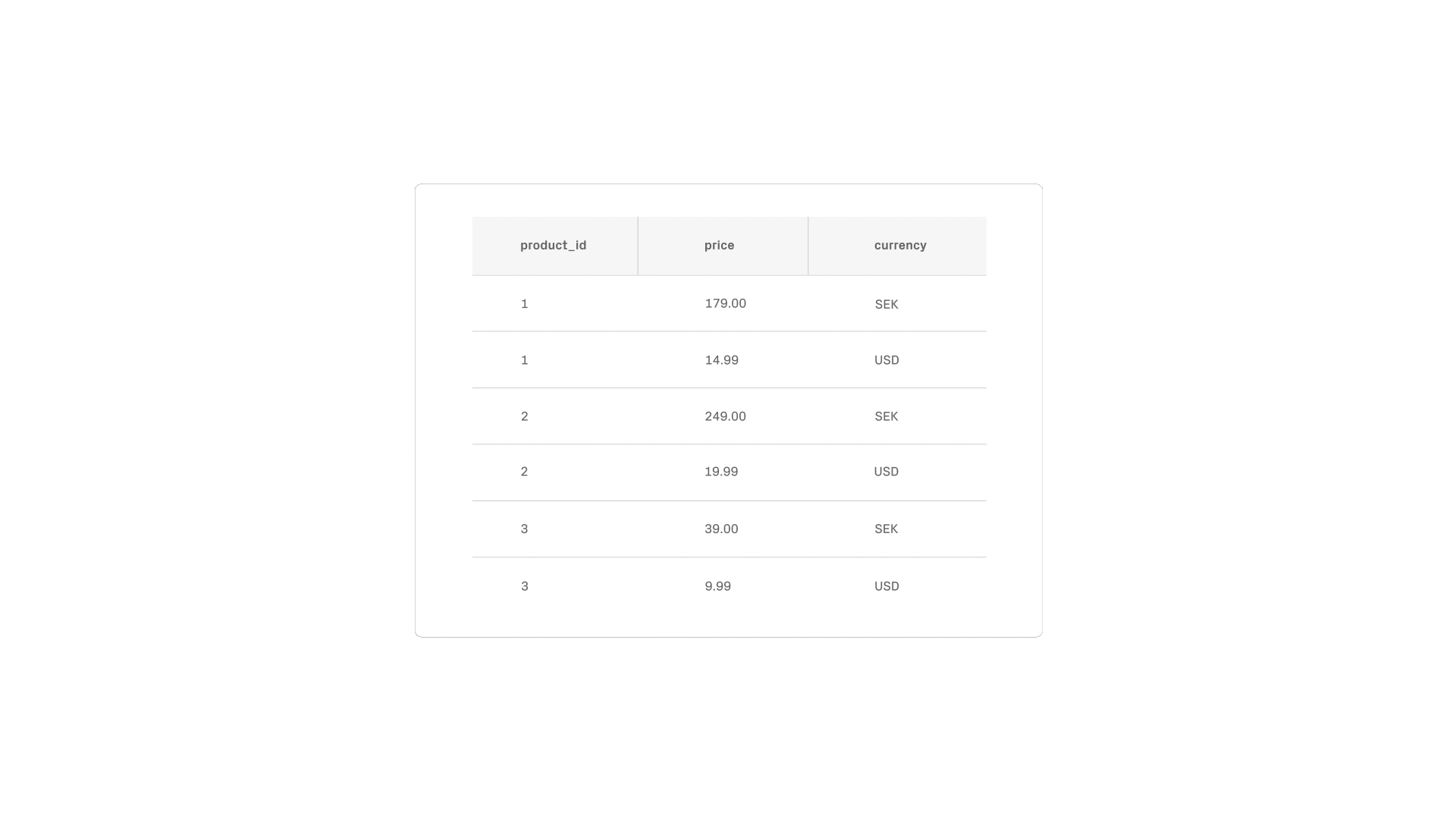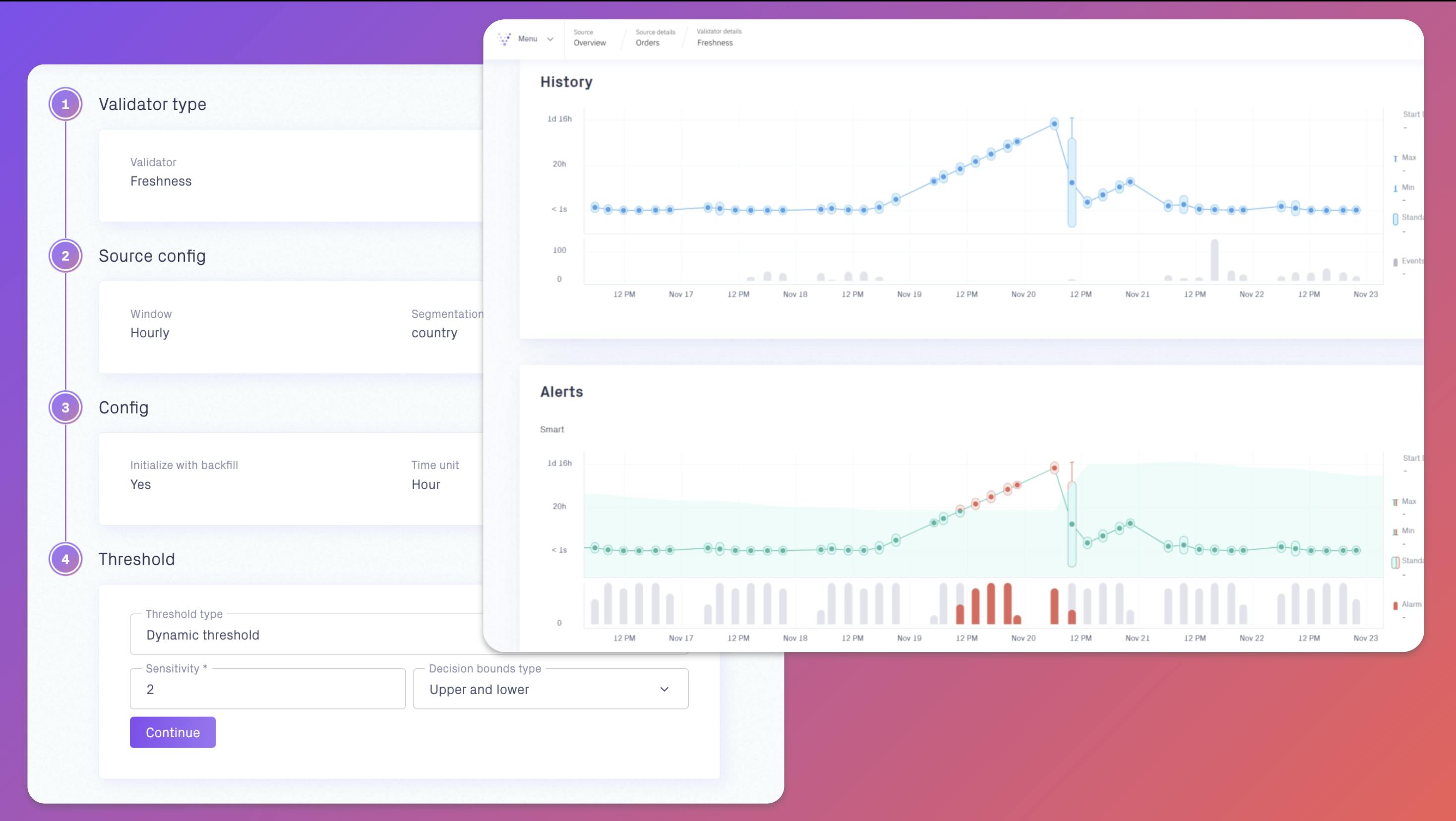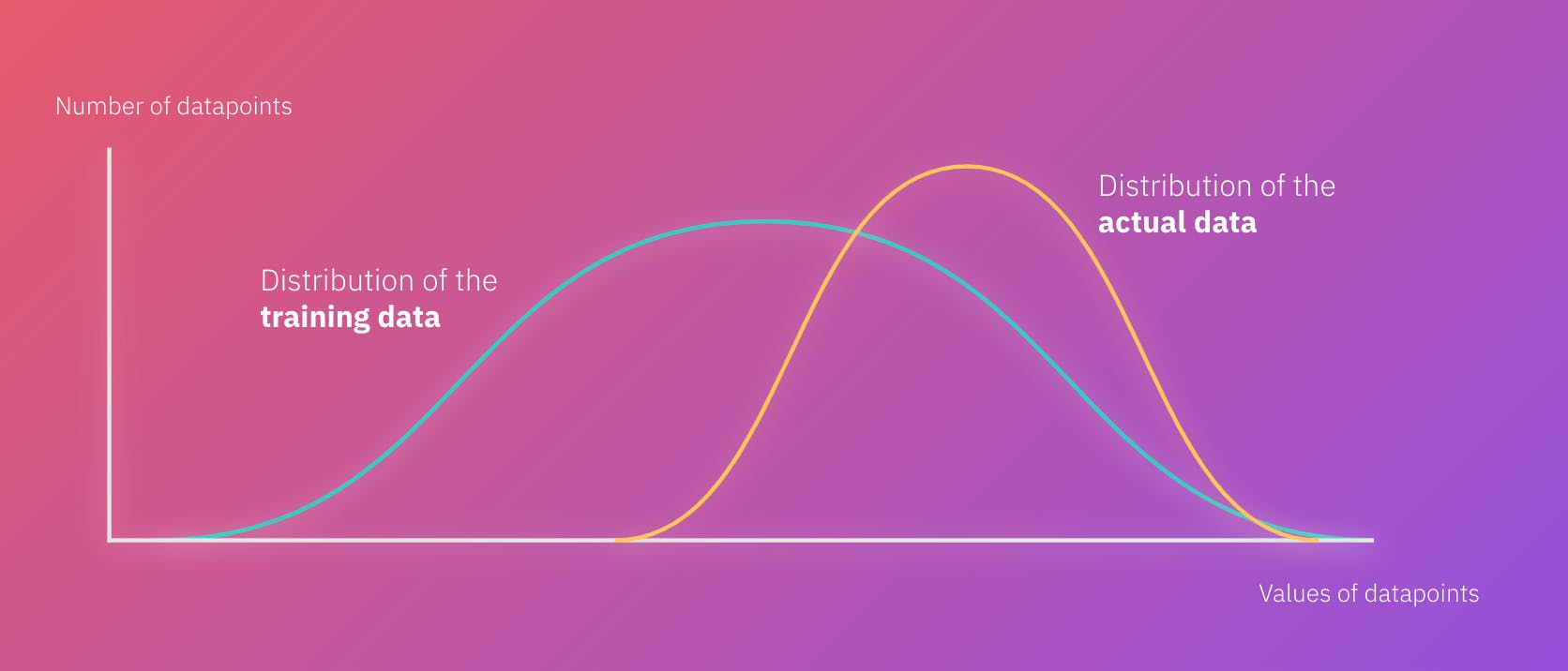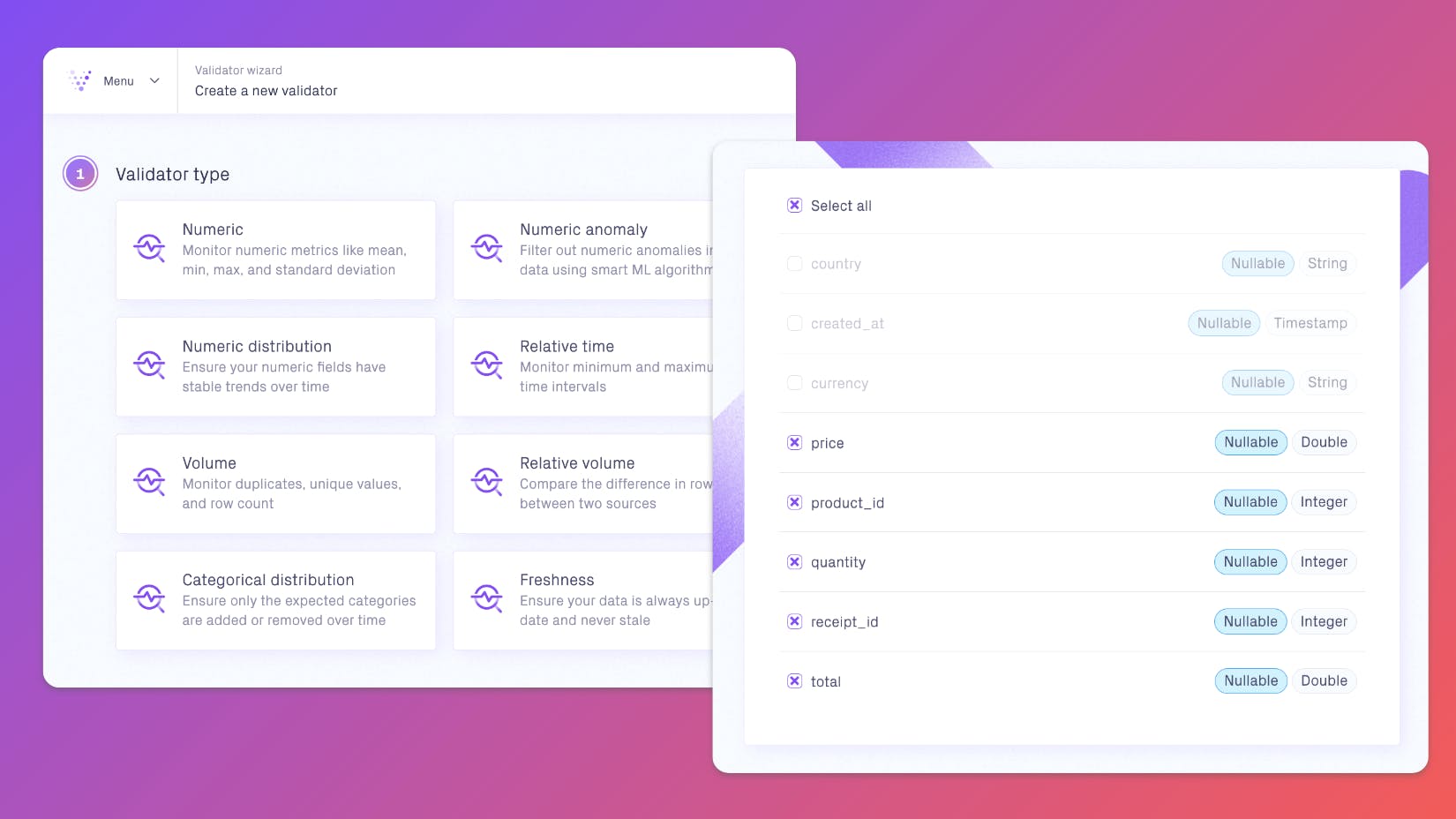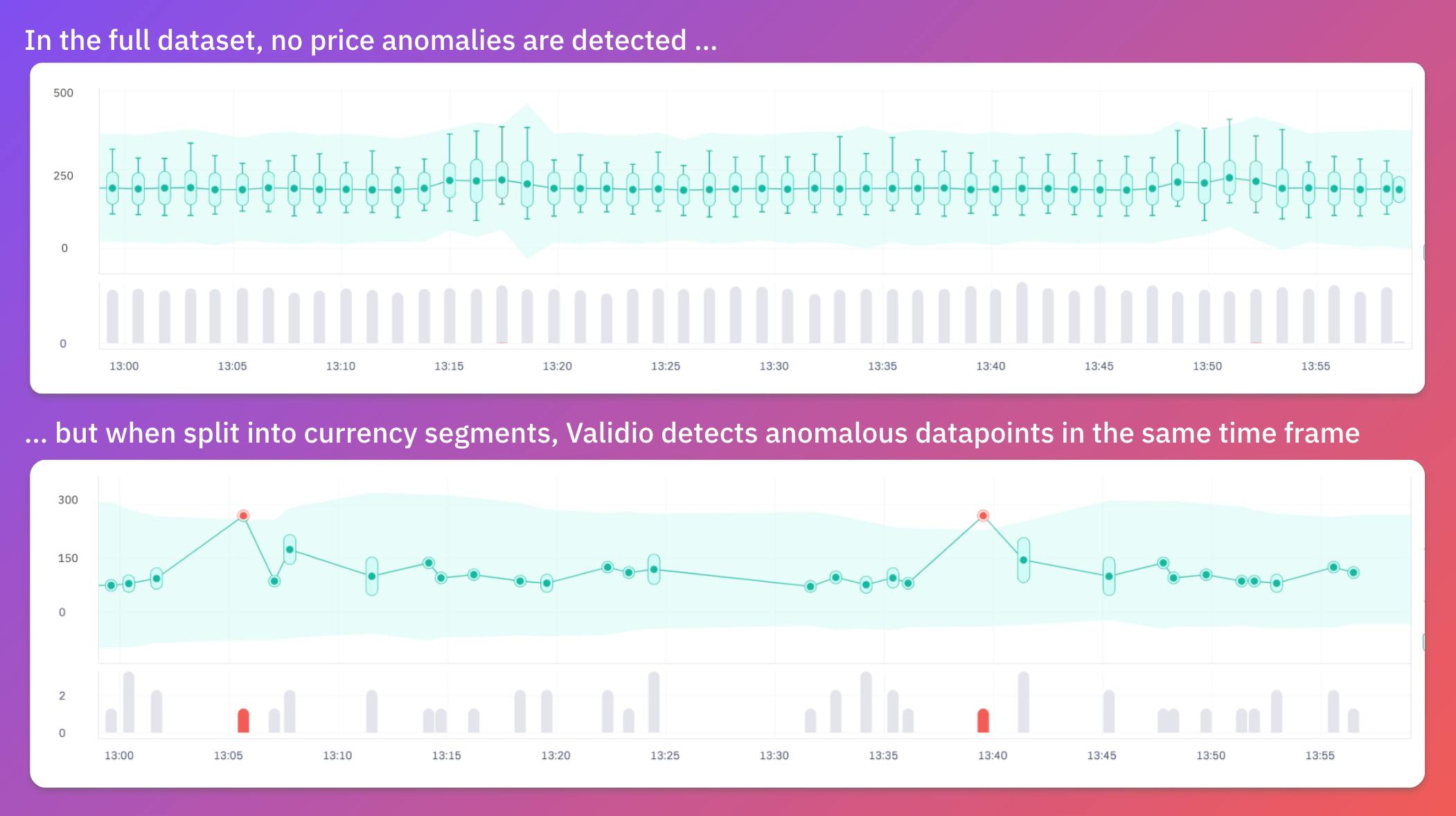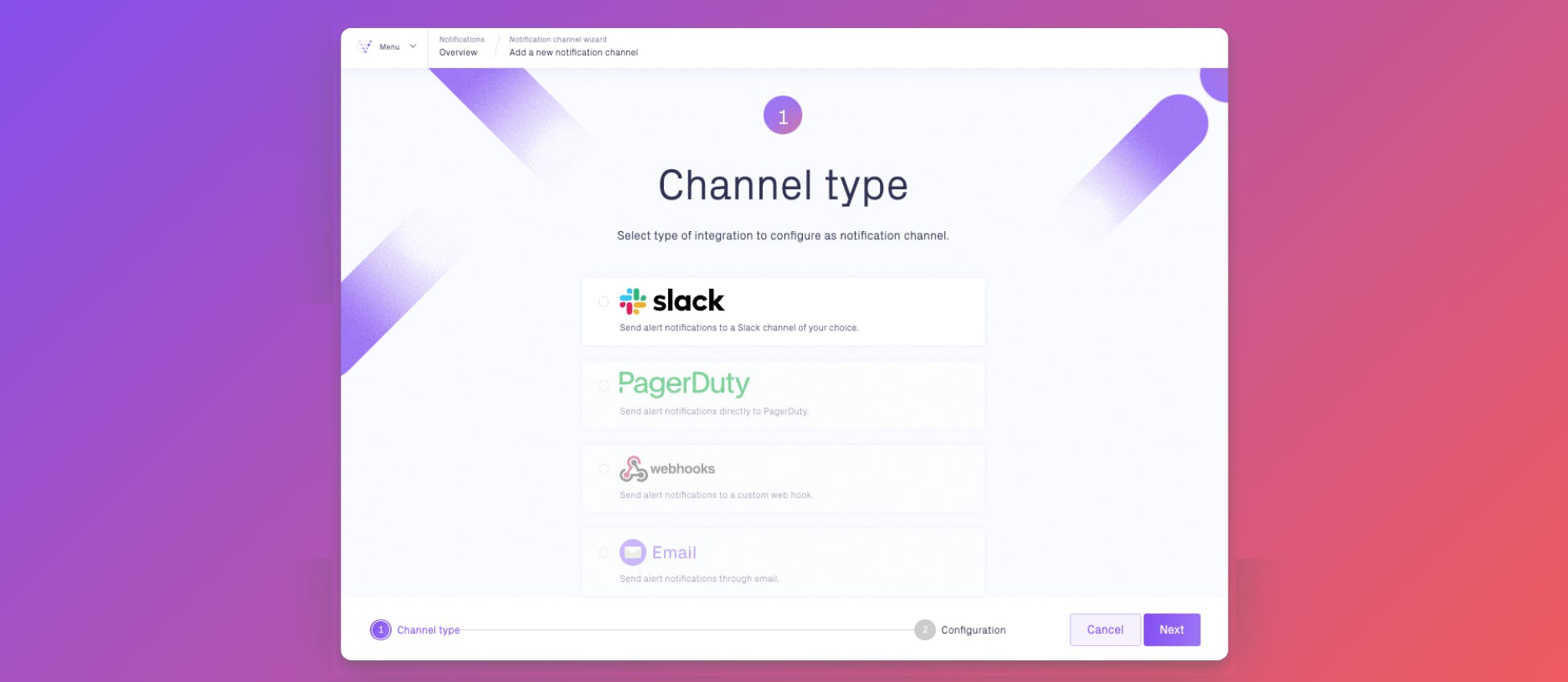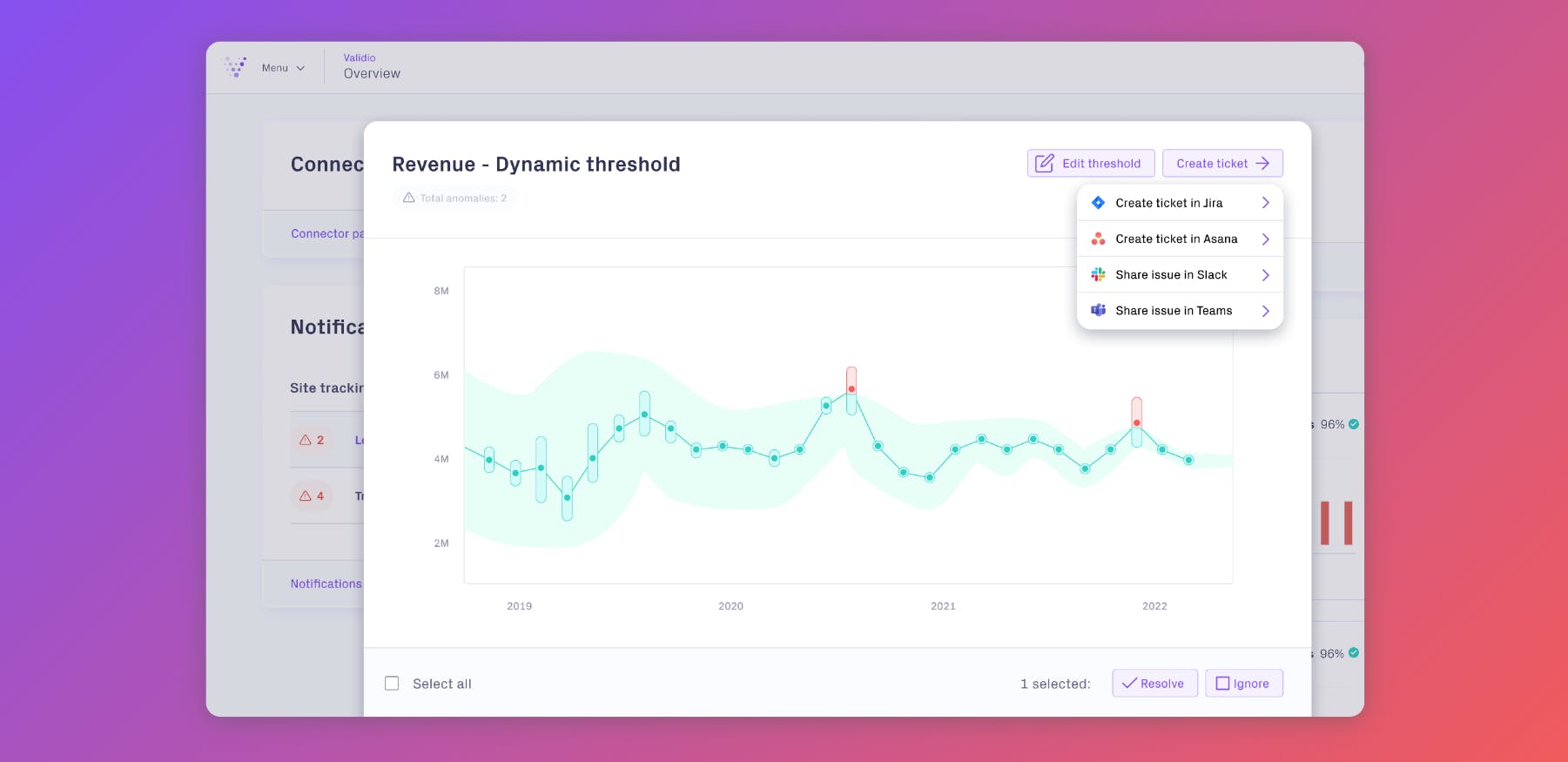A simple business scenario
To illustrate Validio’s capabilities, we’ll use a simple business scenario.
OmniShop, a fictional e-commerce company, has a data team of three data engineers. They provide data for sales reporting and other use cases that rely heavily on accurate data, such as recommendation engines and other machine learning (ML) applications.
In this scenario, we’ll follow one of the data engineers, Julia, who spends at least half of her time firefighting bad data and debugging pipelines. The frequency of data failures has started to erode the company’s trust in data and, by extension, the company’s trust in the data team.
Up until now, Julia has been manually writing data quality checks for their BigQuery tables using dbt and its extension packages, including dbt_expectations. Because the testing possibilities in dbt_expectations are limited, Julia has also written custom data quality tests in SQL. However, since the company has grown significantly lately, so has its number of data sources and transformations in BigQuery. With more data sources comes more business logic—manual tests simply don’t scale.
To combat this, Julia and her team have decided to implement Validio's Deep Data Observability platform. By achieving full visibility into their data pipelines, they hope to regain control of their data quality even as the organization grows.
Julia will start with their most critical dataset orders, which contains sales data for all orders made in each country’s webshop.
